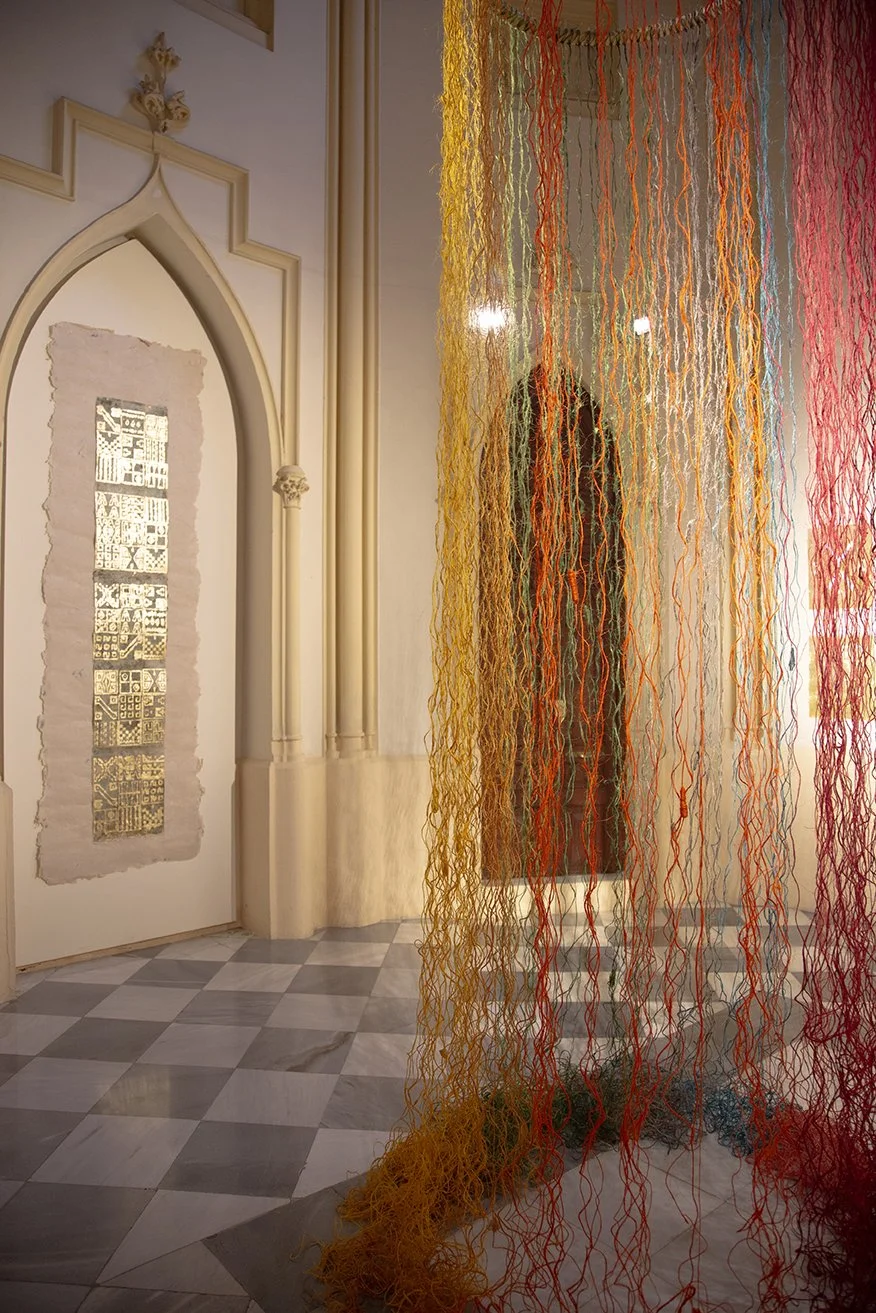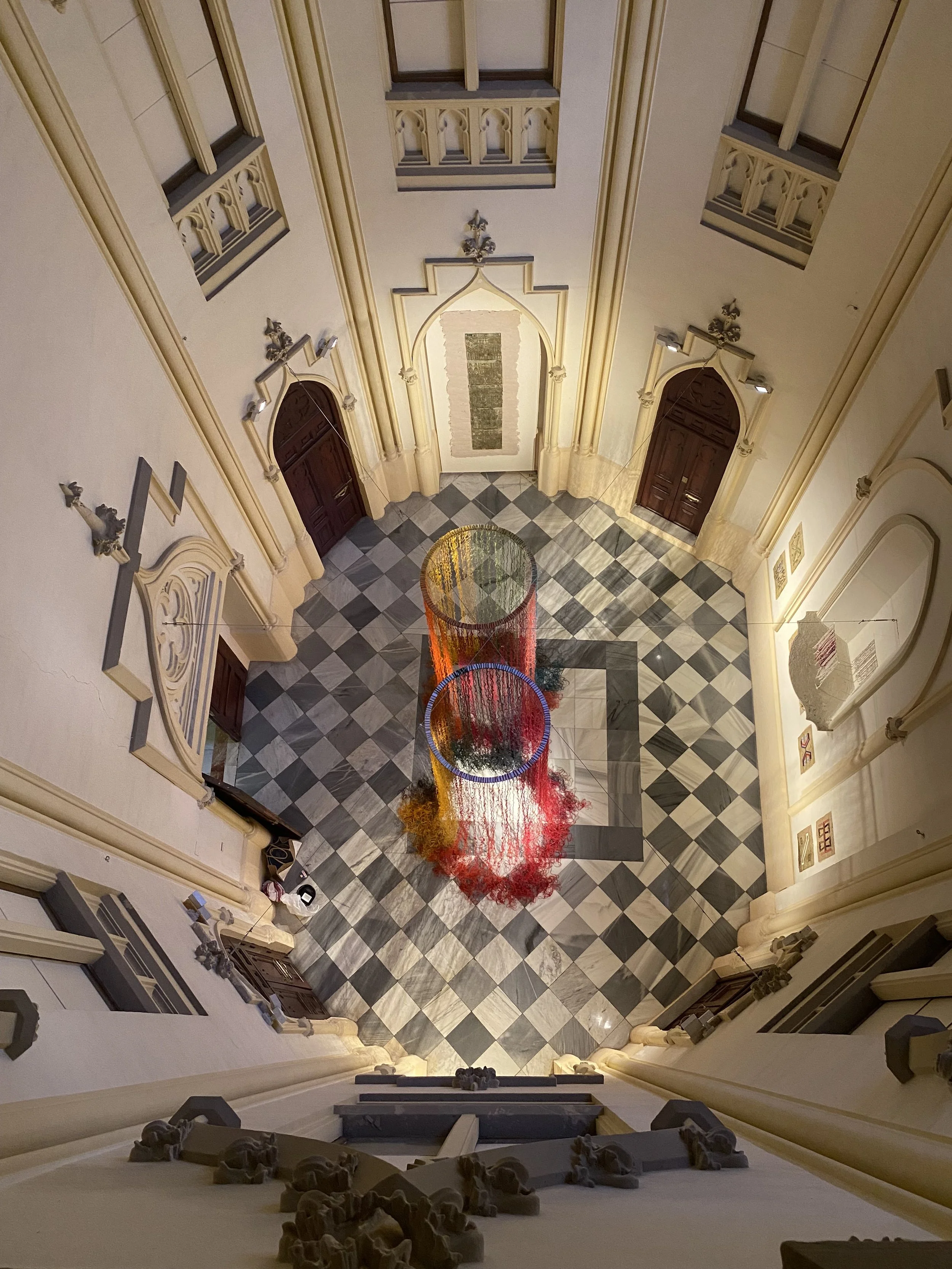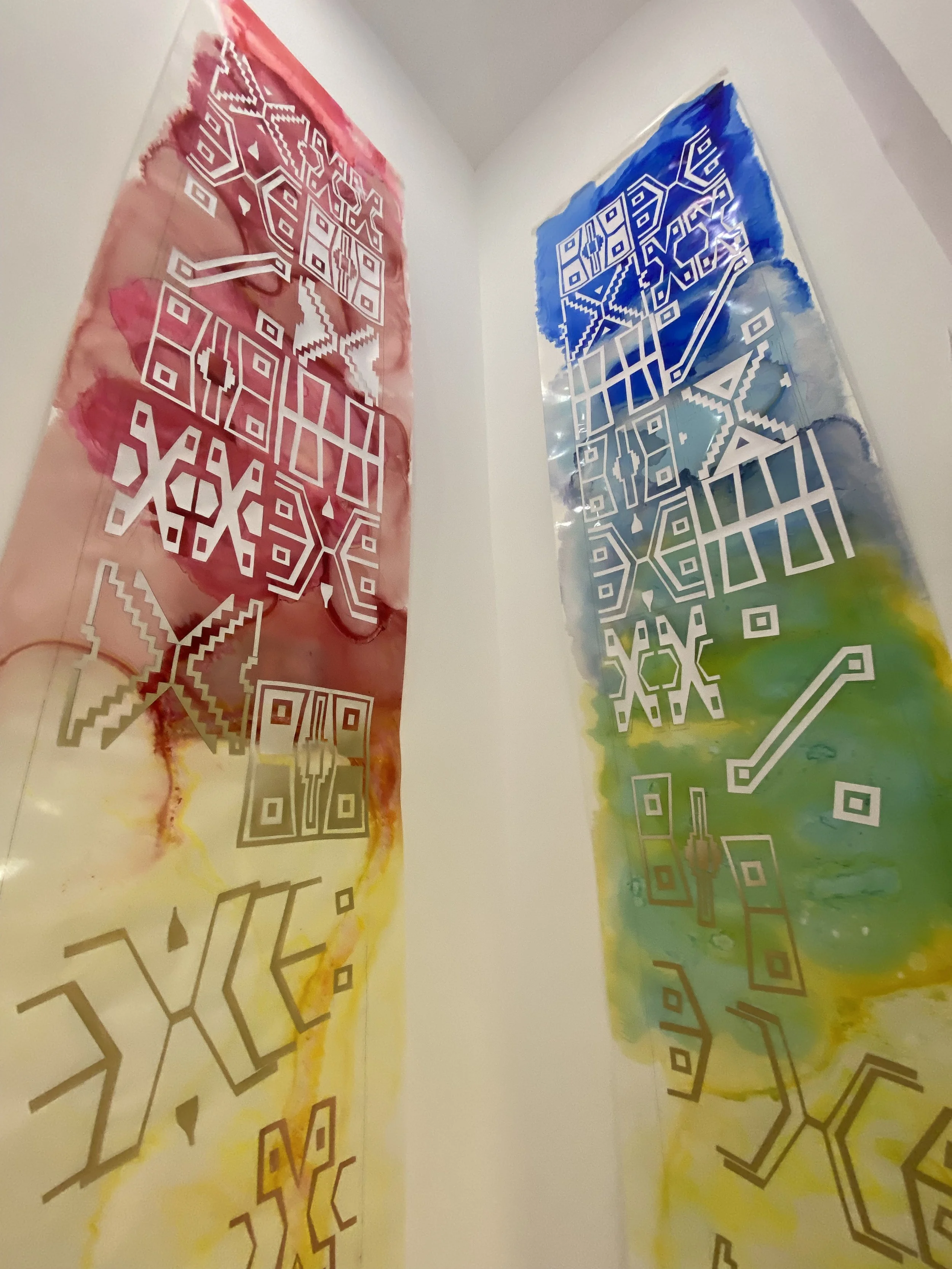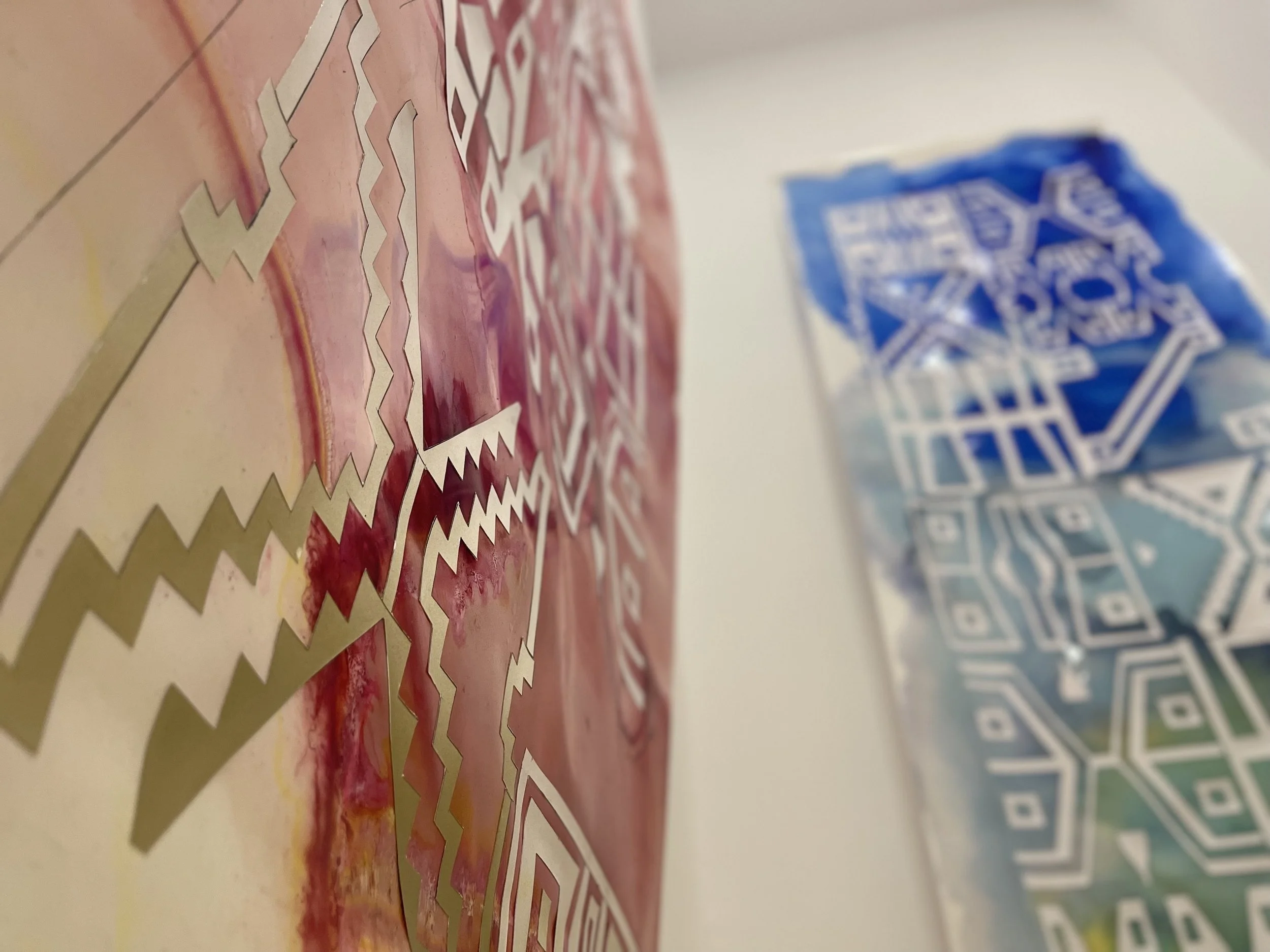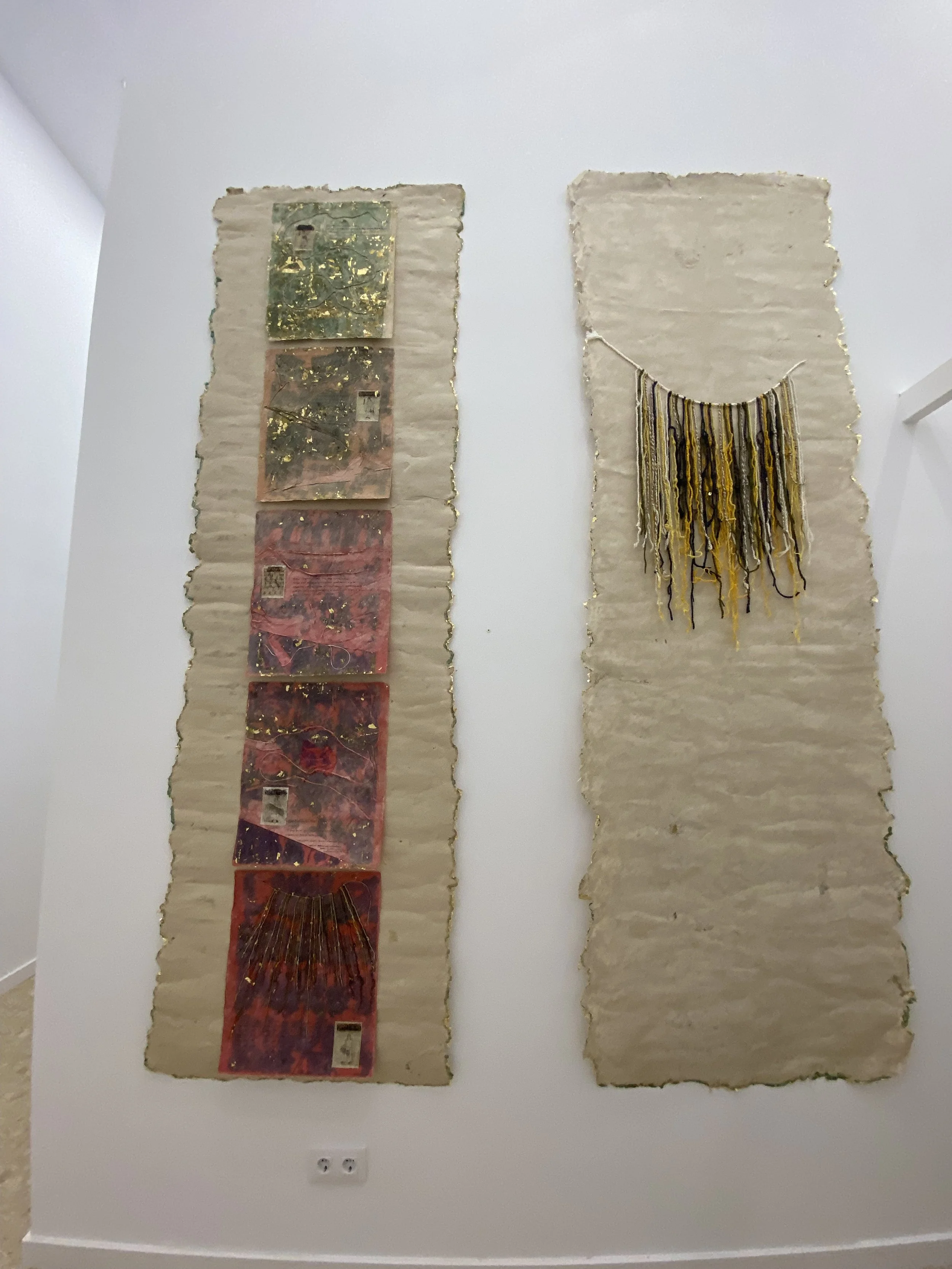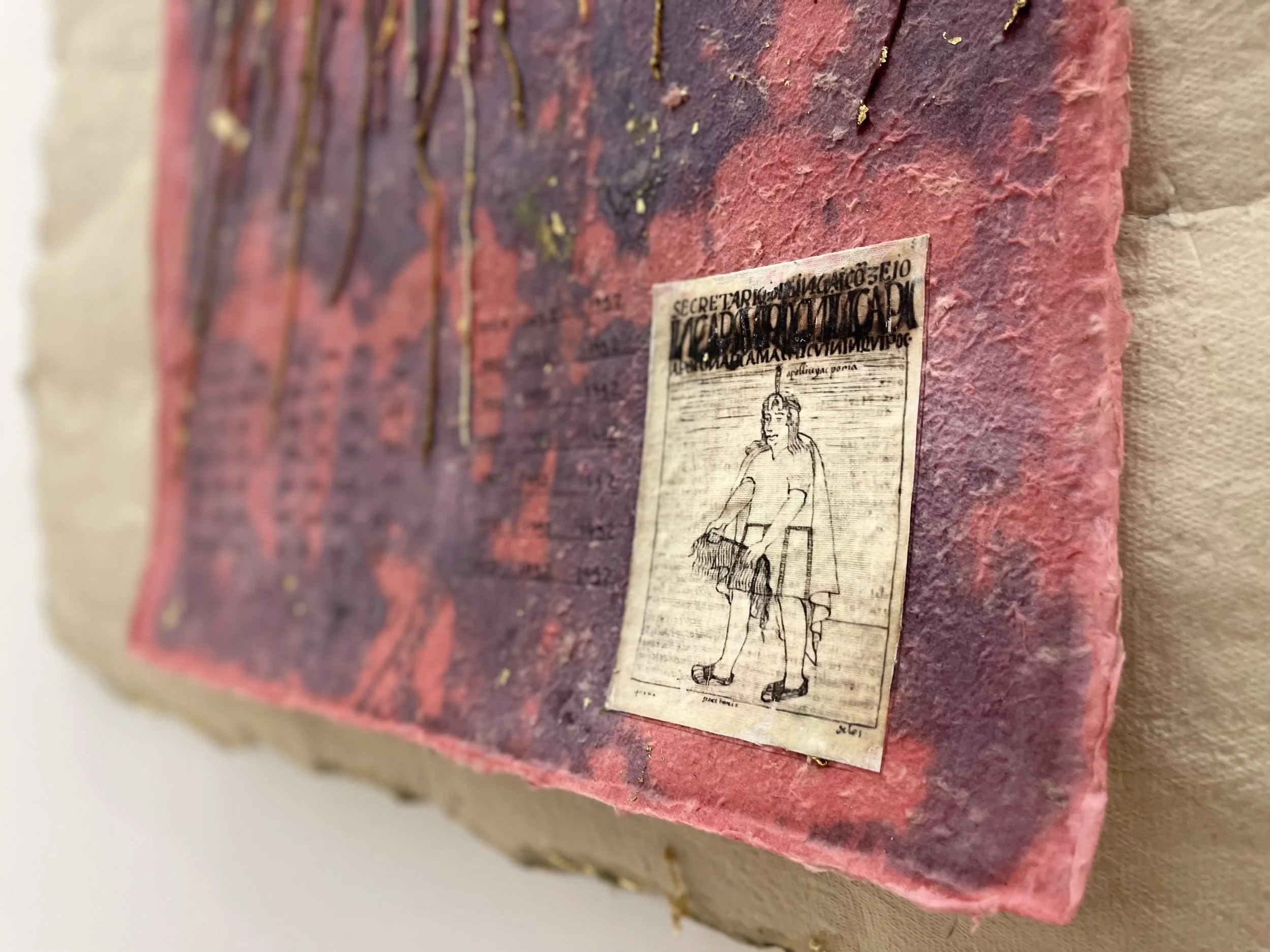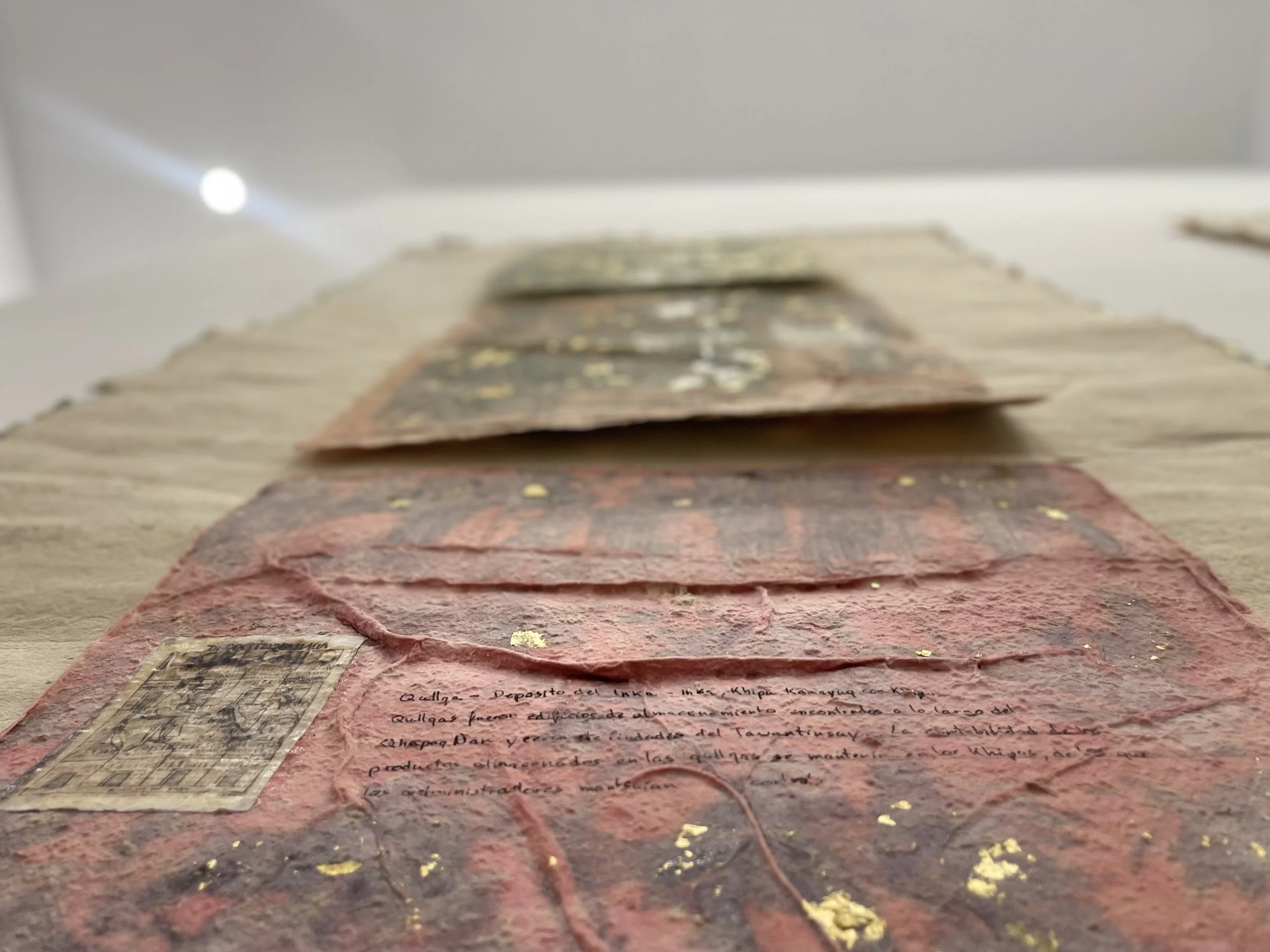
The Language of Khipus
Micaela de Vivero’s vibrant red, orange, tan, yellow, and green-coloured knotted cords of heavy sisal, that hang majestically from an elegantly arced and polished wooden frame and suspended from the ceiling of La Capilla, is created in the form of a very large Inkan khipu. It both dominates and complements the space. The rough surfaces and knots of the khipu’s brightly colored sisal cords contrast with the coolly elegant architectural space of La Capilla, while the elegant sweep of the khipu’s frame echoes the arcs of the stylish Barroque architectural decoration. Vivero’s khipu is a grand and dramatic honorific object compared to its more modestly scaled Inkan source, but its purpose is, in part, to draw attention to its legacy as an instrument of knowledge and power. The Inkan empire did not develop a written language, but it did create khipus, an incredibly complex system of recording, encoding, and communicating information by way of a complex series of knotted, twisted, and colored cords. Every region developed its own nuanced system of khipu encoding involving specific knot shapes, sizes, and placement, rotational direction of twisting, as well as color and material of cording; every message reached a level of precision that we can only imagine today. Khipus were intentionally indecipherable to outsiders and remain so. Their ‘writers and readers’ (khipukamayucs) were so venerated by Inkan society that they claimed to hold ‘the strings’ that ‘governed their entire dominion’.
(Excerpt from writing by Joy Sperling for exhibition at Sala La Capilla, Universidad de Murcia, Spain)


